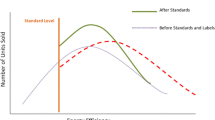Abstract
The analyses on the use of energy in motor vehicles show that the electrical power requirements of the lighting technology can be significantly reduced by the use of new technologies. Where at the moment photometric systems still need on average around 12 to 15 % of the electrical energy available in the vehicle, by the year 2015, future systems will be in a position to reduce the share of energy requirements to 5 to 7 %, aims Hella.
Similar content being viewed by others
References
Bundesamt für Energie BFE (Schweiz): http://www.bfe.de.admin.ch.energie/00588/00589/00644/index.html?lang=de&msg-id=949), Stand 21.01.2008
Centre Info SA, Fribourg (Schweiz): The Carbon Intensity of Car Manufacturers
Greenpeace e.V.: „CO2-Emssion bei der Produktion einer Kilowattstunde“, Oktober 2007
Elektronik automotive: Sonderausgabe Audi A4, 2007
University of Michigan (USA). “The Real-World Frequency of Use of Lighting Equipment”, April 2008
SAE Congress 1999, Paper: “Performance and Perspectives of Light Sources for Signal Lamps”
Author information
Authors and Affiliations
Rights and permissions
About this article
Cite this article
Decker, D., Kleinkes, M. Energy efficiency of car lighting. ATZ Elektron Worldw 4, 18–23 (2009). https://doi.org/10.1007/BF03242211
Issue Date:
DOI: https://doi.org/10.1007/BF03242211




